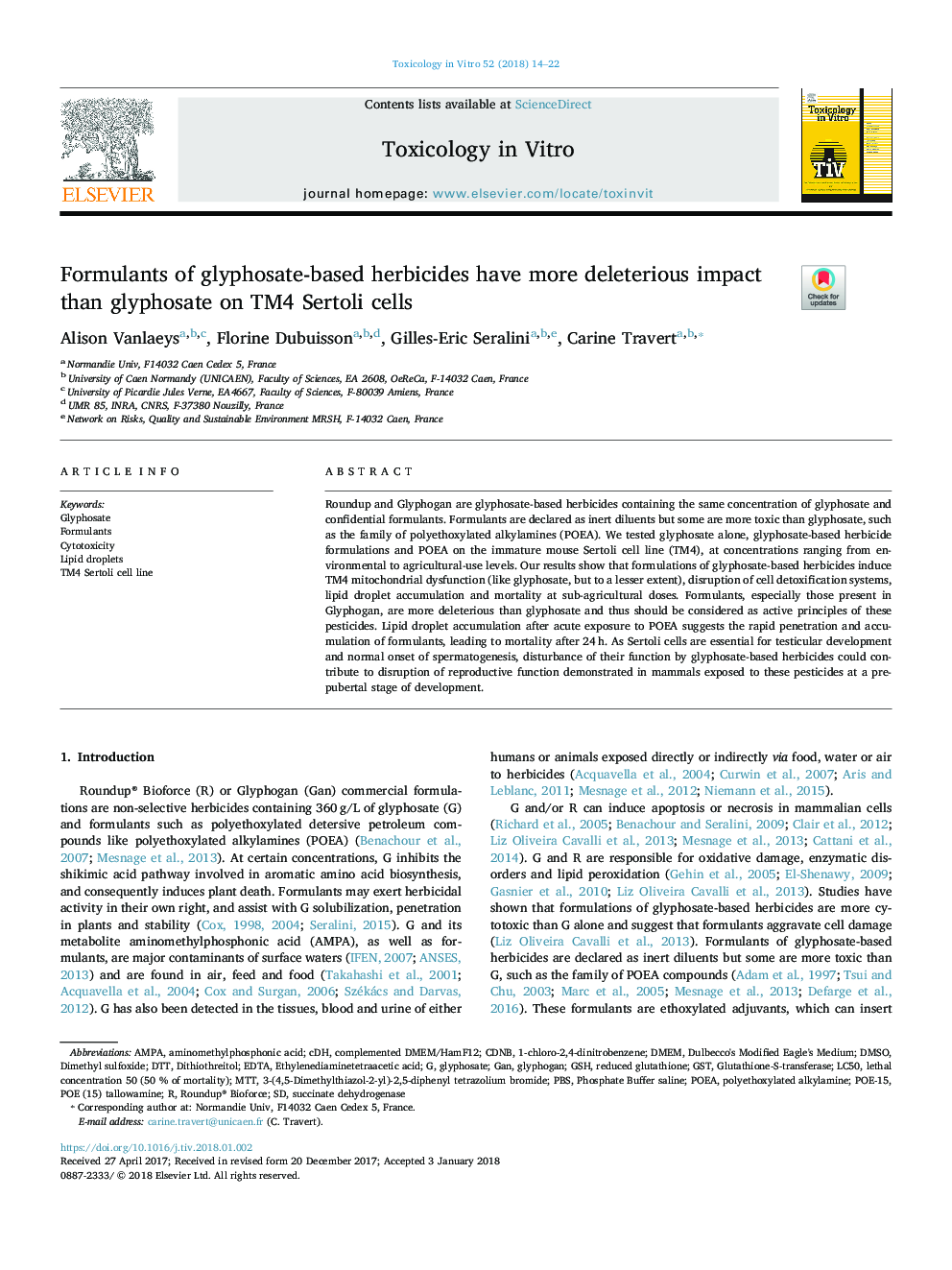| Article ID | Journal | Published Year | Pages | File Type |
|---|---|---|---|---|
| 8553711 | Toxicology in Vitro | 2018 | 9 Pages |
Abstract
Roundup and Glyphogan are glyphosate-based herbicides containing the same concentration of glyphosate and confidential formulants. Formulants are declared as inert diluents but some are more toxic than glyphosate, such as the family of polyethoxylated alkylamines (POEA). We tested glyphosate alone, glyphosate-based herbicide formulations and POEA on the immature mouse Sertoli cell line (TM4), at concentrations ranging from environmental to agricultural-use levels. Our results show that formulations of glyphosate-based herbicides induce TM4 mitochondrial dysfunction (like glyphosate, but to a lesser extent), disruption of cell detoxification systems, lipid droplet accumulation and mortality at sub-agricultural doses. Formulants, especially those present in Glyphogan, are more deleterious than glyphosate and thus should be considered as active principles of these pesticides. Lipid droplet accumulation after acute exposure to POEA suggests the rapid penetration and accumulation of formulants, leading to mortality after 24â¯h. As Sertoli cells are essential for testicular development and normal onset of spermatogenesis, disturbance of their function by glyphosate-based herbicides could contribute to disruption of reproductive function demonstrated in mammals exposed to these pesticides at a prepubertal stage of development.
Keywords
GSHPOEAAMPACDNBLC50GSTDTTGaNPBSDMEM1-chloro-2,4-dinitrobenzene3-(4,5-dimethylthiazol-2-yl)-2,5-diphenyl tetrazolium bromideDMSOCDHDulbecco's modified Eagle's mediumMTTEDTAEthylenediaminetetraacetic acidaminomethylphosphonic aciddithiothreitolDimethyl sulfoxideCytotoxicitysuccinate dehydrogenasephosphate buffer salineLipid dropletsreduced glutathioneglutathione-S-transferaseGlyphosate
Related Topics
Life Sciences
Environmental Science
Health, Toxicology and Mutagenesis
Authors
Alison Vanlaeys, Florine Dubuisson, Gilles-Eric Seralini, Carine Travert,
